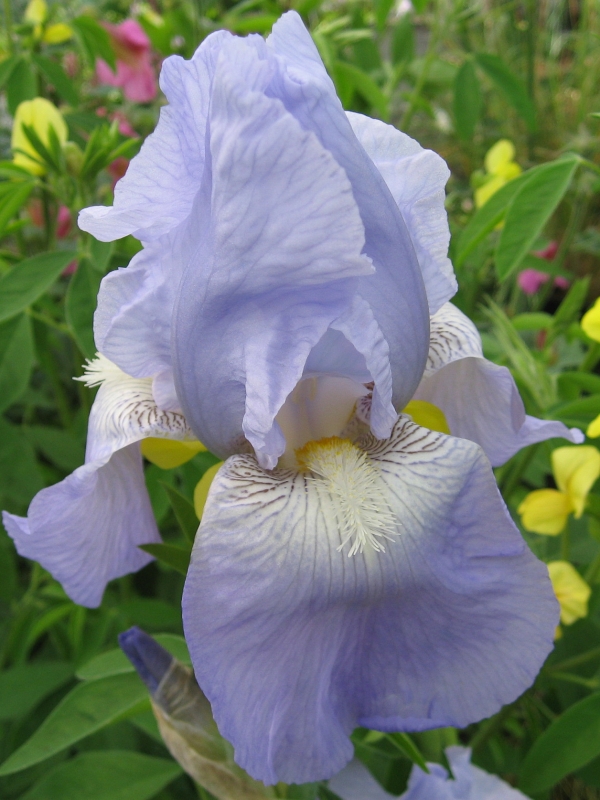Ever wondered how your plants got their names? Well, here are a few.
Iris 'Jane Phillips'
In Greek mythology Iris was the personification of rainbows, and she used them to carry the messages of the gods up to heaven. Iris, the plant name, came about because the people thought that, if they put Irises on loved one’s graves, she, as the goddess, would take those loved ones on to heaven.
‘Jane Phillips’ was bred in 1946 in New Zealand by Dr Robert Graves and he named it after his daughter. In its first year it was noted “Never has an Iris been so popular”. It was also described as ‘having a film star beauty’. Most experts agreed; it is the nearest approach to true blue.
With its elegant look and fantastic vanilla scent, it’s easy to see why it's won so many awards right across the globe between 1946 and 1950.
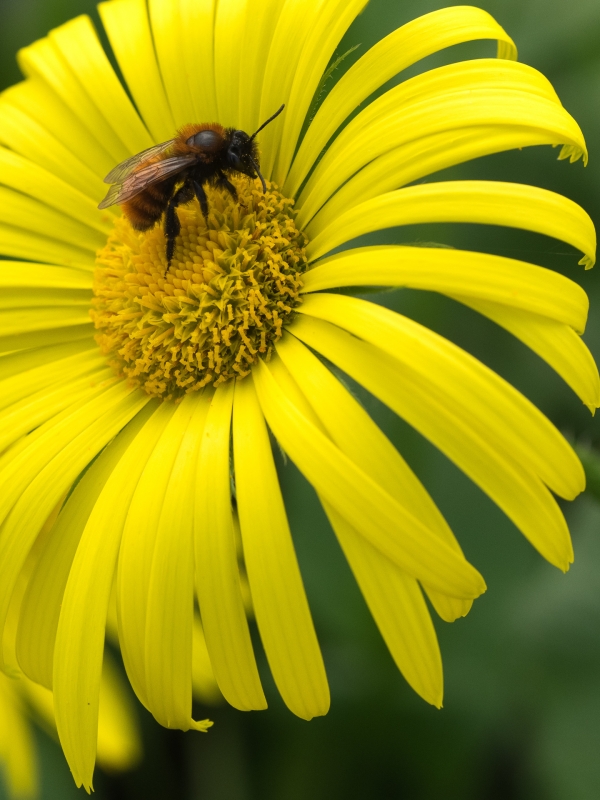
Doronicum 'Harpur Crewe'
The Doronicum group of plants is part of the sunflower family. Donon in old Hebrew means ‘strong’ ‘might’ or powerful’ . It was first recorded in England in the period 1600 -10 when, by adding the ic as was usual when using an adjective, it became Doronicum. It’s also known as Leopard’s Bane, which was said by Pliny the Elder, a Roman author, to have been rubbed on meat in the belief that it would cause any animal that ate it to die from asphyxiation. He may have had something as it is toxic for animals.
Rev. Henry Harpur Crewe (1830 - 1883) was Rector of Drayton in Buckinghamshire. He was said to have had one of the richest collections of hardy plants in Europe in the 19th century. This along with a couple of other plants were named in his honour.
This wonderfully cheerful large bright yellow daisy really adds a punch to a Spring border, flowering for weeks on end.
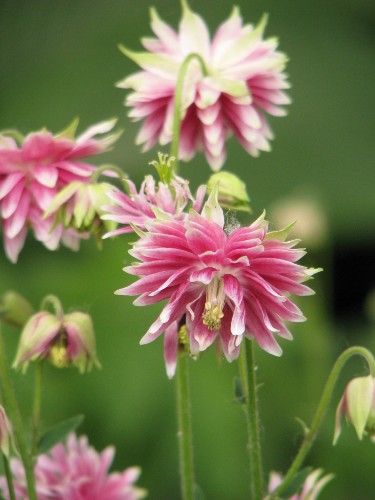
Aquilegia vulgaris ‘Nora Barlow’
In Latin, the word Aquilegia means eagle. As for the plant, the shape of the petals was described as being ‘like the wings of an eagle’ in 1570 medieval Latin. Vulgaris means common. Another name for the plant is Columbine. This is because the petals, when looked at from the base, are said to look like five doves sat in a ring and the name columba means dove. As such it was a popular plant in church carvings.
Nora Barlow (1885 – 1989) was the granddaughter of Charles Darwin and inherited a love of gardening from both sides of the family, but especially her mother who created a garden in Cambridge which was once described as ‘an image of Paradise’. Nora studied genetics at Cambridge and, continued to research the subject when she married Alan Barlow. She tried hybridising various flowers including aquilegias. The ‘Nora Barlow’ flower was pointed out by its namesake as an ‘oddity' but it was almost certainly not bred by her, since a similar form was in existence in the sixteenth century. The seed was collected and named after her. With six children to raise she must have had her work cut out as there’s a whole series of aquilegias (Barlow series) named after her. Look on our website for them.
This very popular elegant plant with its double spur less flowers, looks wonderful when combined with late spring flowering bulbs.
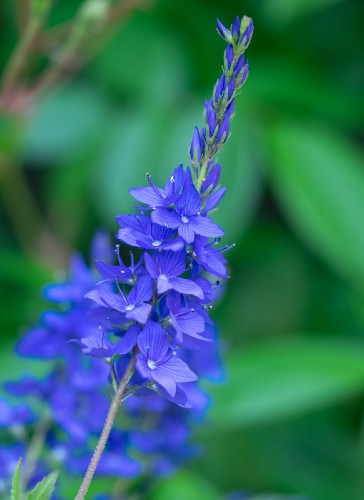
Veronica ‘Shirley Blue’
The name Veronica reflects a connection with Saint Veronica and the plant was documented here in England as early as 1572. Saint Veronica was one of the women who travelled with Jesus to Mount Calvary for the crucifixion. The bright blue of the flower became associated with the bright blue of Jesus eyes. As a result, it was thought the plant had some special healing properties to it. In Ancient Rome the plant was regarded as a general ‘cure all’ miracle healing herb. It’s not recommended for that use today but is often sent as part of a ‘Get well soon’ bouquet.
‘Shirley Blue’ the plant, was bred by The Ladnams’ family who originally had a 90-acre nursery at Shirley Southampton in the 1870’s before moving to Elstead, a village near Godalming, in the 1930’s. The business sold soft fruit, roses and a few hardy plants but the sons expanded to breed many more including this one. With its intense blue that draws the eye, this easy to grow plant is good for suppressing weeds.
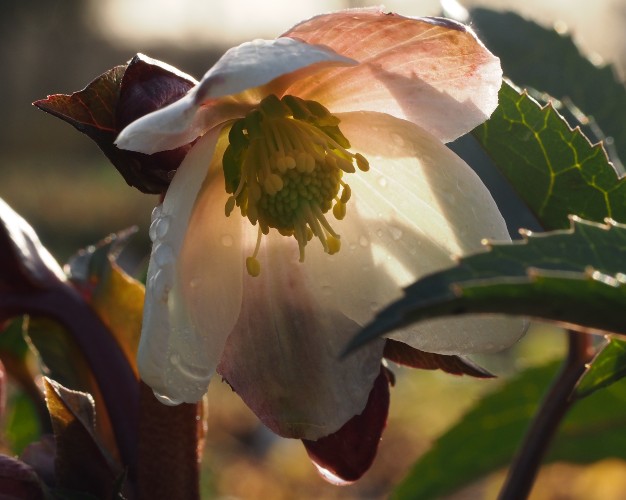
Hellebores x nigercors ‘Emma’ PBR
Native to Greece and Turkey, these evergreen perennial flowering plants are part of the buttercup family. Late in the 14th century, the word Ellebore in old French, Elleborus in Latin and in Greek Helleboros were all given to this plant, and others. They were thought to be both poisonous, and to have medical qualities reputed to cure madness too!! If you are wondering, don’t eat them as they are harmful.
‘Emma’ came from part of a planned breeding program in Oastkamp, Belguim and is relatively new as it’s only been available since 2005. The objective of the program was to create new vigorous Helleborus with early and freely flowering habits. It has a good garden performance and will tolerate wind, rain and temperatures down to 20 degrees centigrade.
At 25cm tall ‘Emma’ is perfect in the cottage garden; flowering from late Winter into the Spring. It looks marvellous in amongst bulbs.

